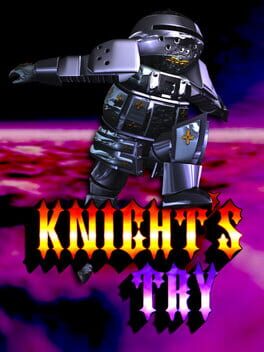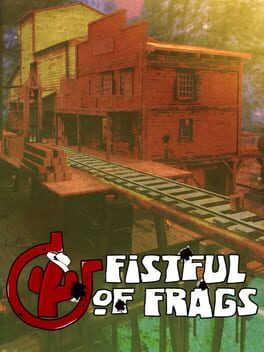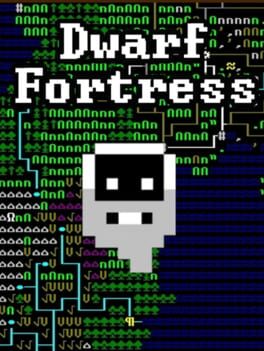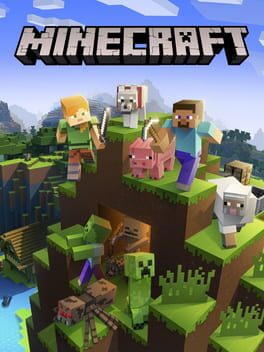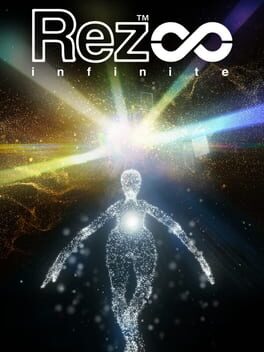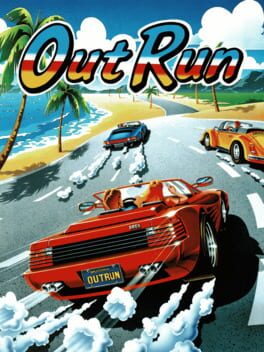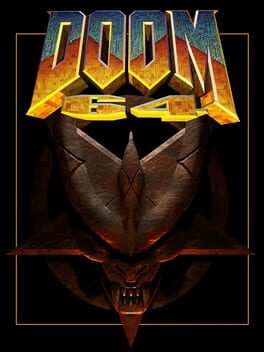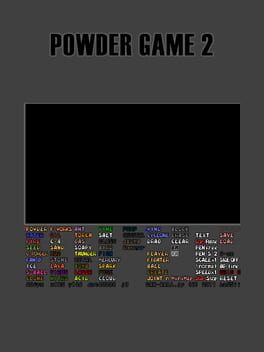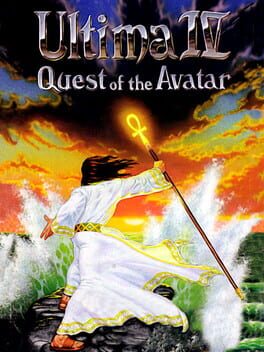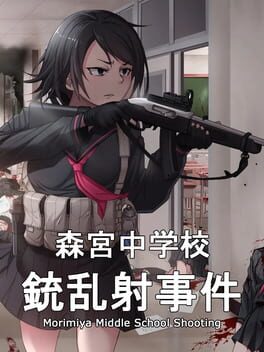2022
2023
Very fun and engaging at first, but the lack of a map makes navigation a chore, and to be honest (and this is likely a skill issue on my part) the basic movement mechanics feel very fluid and awesome, but having to try and pull off the much more precise fighting-combo-like half-tilts of the stick and button presses and shit in order to progress through certain areas is very frustrating for someone like me who doesn't have super fast reflexes.
Idk, a lot of the time I felt like it was blind luck that I somehow managed to put the button combos in correctly to get past a gap and then having to try and replicate that to go back was really frustrating. I feel like SM64 speedrunners who already get a kick out of precise movement mechanics will love this but I had to drop it. I may come back to it eventually because this game is really lovely in a lot of ways, despite how the combat isn't very good.
I'm trying to get back into playing more games; a lot of my time has been spent at work and I've finally started production on my own game, and it's been in the works for a few months now. Maybe in a year or so I'll be able to give more information on it.
Idk, a lot of the time I felt like it was blind luck that I somehow managed to put the button combos in correctly to get past a gap and then having to try and replicate that to go back was really frustrating. I feel like SM64 speedrunners who already get a kick out of precise movement mechanics will love this but I had to drop it. I may come back to it eventually because this game is really lovely in a lot of ways, despite how the combat isn't very good.
I'm trying to get back into playing more games; a lot of my time has been spent at work and I've finally started production on my own game, and it's been in the works for a few months now. Maybe in a year or so I'll be able to give more information on it.
2007
This game is honestly pretty good but the ping can get so bad it severely hampers the online experience; that and how mechanically, movement hampers your accuracy and so you have to stand still/crouch to improve it contradicts how lethal the gunplay is, to where you have to move around a lot to avoid gunfire, and it makes for a very confusing experience at times because you're wondering why some shots from near point-blank range don't hit and others do. Just feels very luck-based at times which is when the game feels at its worst. But maybe I'm just an idiot, idk.
BUT when it is working right it's a good time - great sound, reloading is made a strategic choice due to how long it often takes guns to reload, thus effectively selling the tension of the western-gunfight fantasy, and the maps are fun and well designed.
BUT when it is working right it's a good time - great sound, reloading is made a strategic choice due to how long it often takes guns to reload, thus effectively selling the tension of the western-gunfight fantasy, and the maps are fun and well designed.
2006
2020
Honestly tried to stick with this one but the level design kinda sucks lol. Felt like a frustrating test of trial and error to figure out where to go in these levels, and while it's a very nice-looking game, nothing about its aesthetic really grabbed me in the way I hoped when I watched the trailer on Steam.
Also I kinda feel bad that I haven't been playing as many games lately, I was recently laid off from my job and I've been trying to put my time and energy toward my main creative efforts or looking for work. Looking to find another game that'll really spur me back into playing again.
Also I kinda feel bad that I haven't been playing as many games lately, I was recently laid off from my job and I've been trying to put my time and energy toward my main creative efforts or looking for work. Looking to find another game that'll really spur me back into playing again.
2011
2016
When the guitar roared into existence while you're flying through those corridors chasing after the boss in Area 4 I felt like my third eye opened. Also I was playing through Rez X and I died in the final area and my controller literally wouldn't stop shaking until I shut it down lol. This game is too Powerful.
2013
Interesting that this is referred to as a walking simulator when it almost feels more like a consciousness simulator, i.e that most "walking simulators" such as Gone Home, Death Stranding, Dear Esther, etc are concerned with conveying a certain physicality within the depicted space (footstep sounds, walking animations) while in Proteus you simply glide through the island, the sense of drift feeling like an out-of-body experience. Reminds me of the sort of waking dream state you fall into while tripping, though Proteus is a much less absorbing experience than that. Visually and aurally very nice though.
1986
Fascinating to me how so much screen-space is devoted to the sky in this game, perhaps because the game's ultimate theme is just "chasing that new horizon" - the blindingly fast parallax scrolling produces almost a strobe-type effect in some sections that, alongside the lovely chip tunes and soft, blissful colors, produces an almost psychedelic hang-out kind of experience. This feeling is of course tempered by the very strict time limit imposed on the player; you can take a moment to smell the roses but you've still got the bag to catch. Good stuff.
1997
Certainly better than the original Doom in terms of overall design and tone (this was always meant to be a frantic horror-shooter at its core, the lighting engine and musical shift just helps it lean into it far more than the original) but playing Halo really put into perspective that I just don't find this very interesting. It is frankly a repetitive work, and though I would like to eventually come back and finish it (and I'm still interested in playing Doom 2), every time I think about booting it up again I just can't bear to lol. Some sections in Halo are a pain to navigate but at least there you don't have to waste time running around scrounging for key cards and figuring out how to unlock new areas to progress. The gunplay's still fun but I can only do so much zig-zag pop-and-shooting before I get rather bored.
2001
Played CE Anniversary and I think there's something to be said for how the updated graphics just totally muddy the original vision of the game. This was my first time playing through the game and even now what's conveyed is really unlike anything else yet released; thinking of the vista wherein you first see the Halo stretch out in front of you and then you're able to look up and follow it far into the sky, completely selling the setting and scale of the conflict you find yourself wrapped up in, it's a simple, clean, palpable visual. Yet the updated graphics add tons of clouds and mist and you can just barely make out the furthest rim of the Halo amidst it all and even though it's more "realistic" it's so much less interesting to look at. Another argument for how technical limitation breeds creativity.
Outside of that, still totally rousing 20 years later. Certain sections are certainly frustrating/sluggish gameplay wise (The Maw (swear that section in the cafeteria with the Covenant took me like 20 minutes to get through, and the bit with throwing the grenades into the vents is moronic), The Library as well), but it really nails almost everything else. Doesn't feel bloated or thin, makes good use of all its mechanics throughout, wonderful enemy and AI design, a gorgeous score; it's a legitimate banger and makes me excited to play Halo 2. Honestly felt like a kid driving the Warthog through the ship on the way to the end, what a perfectly choreographed sequence.
Outside of that, still totally rousing 20 years later. Certain sections are certainly frustrating/sluggish gameplay wise (The Maw (swear that section in the cafeteria with the Covenant took me like 20 minutes to get through, and the bit with throwing the grenades into the vents is moronic), The Library as well), but it really nails almost everything else. Doesn't feel bloated or thin, makes good use of all its mechanics throughout, wonderful enemy and AI design, a gorgeous score; it's a legitimate banger and makes me excited to play Halo 2. Honestly felt like a kid driving the Warthog through the ship on the way to the end, what a perfectly choreographed sequence.
2022
This review contains spoilers
Tbh I've never been a "lore" guy when it comes to Soulsborne games, I'd read some item descriptions and I've watched Dark Souls and Bloodborne analysis videos but the narrative hooks for them never really grabbed me beyond a superficial level, I understood them as the backdrop for interesting fights and environments, afforded cohesion by just enough narrative/thematic tissue that a throughline could be followed, and that was of interest enough for me.
In contrast, by the end of the first intro cinematic of Elden Ring I was hooked, instilled with the same level of fascination as when I'd pore over books about the Crusades or the War of the Roses as a teenager, or when playing FF Tactics. That this contains the strongest character writing in the series only lends weight to the relationships between characters, enhancing the narrative scope to where it matches the vastness of its physical world. No game since Morrowind has felt this big, so stuffed with intrigue, so dedicated to conveying the feeling of going on a real journey.
It baffles me how anyone could make any kind of complaint about the "nothingness" between points of interest when the navigation of geography plays such an important component in the overall experience. Instead of being composed of vast flatlands and hills like, say, Skyrim, where traversal is rarely a matter of forethought, the verticality of Elden Ring's landscapes means that getting to your destination is always fun in and of itself, and of course Torrent's ability to double-jump adds to this (even if the mechanic can feel weirdly unresponsive at points). Equally baffling is some people's assertions that Breath of the Wild's range of interactions in regards to its open-world is greater than Elden Ring's, which is a totally laughable statement. In comparison to the actually copy-pasted shrines and functionally similar dungeons of Breath of the Wild, Elden Ring's dungeons past the Limgrave area make a consistent effort to keep things interesting, adding various gimmicks such as having to progress through finding hidden walls, teleporting chests, light-based puzzles, those bullshit chariots, manipulating fire-spewing pillars to reach certain sections (and which also tie into the light puzzles), etc.
To say there aren't any repetitious elements in Elden Ring would itself be inaccurate (i.e Erdtree Avatars, some dungeon bosses, various dungeon layouts), but frankly Elden Ring's combat system is so engaging and brimming with so many options in terms of tackling them that I almost never experienced fatigue when combating them. And even then, most of the bosses that are re-used add an additional obstacle that forces the player to re-think or adjust their tactics (a fight with two Stone Watchdogs adds several gargoyles that have to be dispatched during, for example). Now a valid complaint in regards to some of these fights is that they feel like they were ripped straight out of Dark Souls II, with bizarre hit-boxes and the over-arching philosophy of "difficulty means throwing more enemies at the player" guiding them (and no wonder when DS2's director Yui Tanimura worked as co-director on this). By the end of the game, however, these types of fights simply become more annoyances than anything, and are spaced out enough to where I don't feel they largely detract from the overall experience (and ultimately this is not a game for completionists, every dungeon is not meant to be explored imo).
To go back to the absurd point regarding the "nothingness" of Elden Ring's world design, what this game does in a superior fashion to its predecessors is creating what feels like a cohesive ecosystem, in regards to not only the landscape but also the relations between characters. In Dark Souls, for example, while the inter-connectedness of its world remains impressive, its levels ultimately still feel disconnected from each other, i.e Blightown is the swamp level, Sen's Fortress is the dungeon level, Undead Burg is the abandoned town level, etc. There's very little overlap between these spaces, and their functionality within the space of the world of Dark Souls is centralized only within that specific area. This relates to the characters as well; outside of the intro cinematic, we don't get a sense of the relation between Gravelord Nito and Seath the Scaleless, they are merely Big Bads that must be dealt with. Of course, Dark Souls didn't need to do more than this, it works because it's the best kind of simplified, dark fantasy action-adventure, operating in the same vein of various level-centric NES/SNES titles with a bit of D&D thrown into the mix.
In Elden Ring, as you learn more about the demi-god opponents you must face, you find out that Melania is the reason for why Caelid is a scarlet-rot ridden biohazard of an area, and is responsible for Starscourge Radhan's madness after basically detonating a nuke upon the area. Raya Lucaria is the birthplace of glintstone sorcery but these practices created conflict with those that performed the divinities of the Erdtree, which then ties into the mysteries surrounding Renalla and Radagon's relationship, and his subsequent leaving of her for Queen Marika. The Erdtree itself, the towering goal-post which the player strives to reach for most of the game, forms the anchor by which all the other landscapes work in relation to, and forms the baseline for the ideologies of several competing factions, including Volcano Manor, whom Praetor Rykard's blasphemy was enacted in opposition to. All the central locations and characters in Elden Ring create a web of conflicting motivations which then influenced the underlying motivations for smaller characters such as Patches, Diallos, Ranni, Melina, etc. Bloodborne did this kind of interwoven tapestry style of writing to an extent (and though I have not played Sekiro I hear it does it as well), but never before in a FromSoft game have I been so emotionally invested in the conflicts of its characters and their desires/worldviews, instilling in me a desire to truly pore over item descriptions and formulate my own interpretations of narrative elements from them. Ranni's questline in particular is the most moving, Blaidd and Iji are some of my favorite side-characters in any FromSoft game, so subtly rendered and memorable. I rarely went out of my way to finish most of the character questlines in previous Soulsborne games, but here I actively wished to see all the ones I came across to completion (for story reasons and because the rewards were so enticing).
In terms of design, I think multiple valid complaints can be lobbed against Elden Ring: horse combat is generally very wonky and I found it sometimes inconsistent in terms of hit detection and Torrent's own usability (I believe it's some kind of coding error where Torrent does not regenerate health if they get injured, then you die and respawn at a site of grace, leading to multiple instances of them dying with the first large hit they receive from an opponent you've been battling). Mountaintops of the Giants is easily the weakest area in the game, particularly the Consecrated Snowfield which is deeply uninteresting except for one or two sections, and really only serves as a connecting area to the Haligtree, which is in terms of design a deeply fucked area as well. Feels like little forethought was done in terms of enemy placement or pacing, every enemy beyond the soldier grunts have massive HP pools and form gank squads together; tbh once you get to the Giant's area and the Haligtree you get to the point where you're no longer looking to peek around every corner discover what's out there, you're rushing to the next boss to get through everything as quickly as possible. It's odd that several bosses feel like they outright encourage you to use summons, but at the same time don't feel properly balanced with/without them. The final boss in particular is baffling in how the first section is a fun fight that, unless you play perfectly, is very draining on your resources and then immediately throws you into yet another resource-draining fight upon its completion. It almost feels like you're required to use summons to get through the final fight, but once you do then it's just a cheese with melee and Comet Azure (spellswords still remain a goat character build). The one-time re-use of Astel, Naturalborn of the Void was the one time I was genuinely shocked at recycled content, it's out of left-field in that it feels so dissonant with the area it's contained in and is a boss that only works in relation to Ranni's questline, it's the only re-use that feels totally lazy and not fun. Another thing is that I don't feel any of the endings are particularly satisfying; while Ranni's is by far the best, none of them feel as satisfying as perhaps they should (compared with both Demon's/Dark Souls and Bloodborne which retain an enigmatic quality but feel like proper conclusions). Most endings just feel rushed, despite their gorgeous direction (and the quality of the cinematics is something I forgot to touch on, perhaps at a later time).
Even so, after 157 hours with my first playthrough I felt an intense desire to jump back in with a new character and go through it all again. I genuinely think this sets a new standard for the genre (especially in the ways it really captures a tabletop-esque gaming experience, something I may go into at another time), and while I hope FromSoft does something different for its next title (after this I could only see them going through a process of refinement and not a lot of design progression), I feel the team has really hit their stride; right now I don't see much contest for what I'd pick for Game of the Year.
In contrast, by the end of the first intro cinematic of Elden Ring I was hooked, instilled with the same level of fascination as when I'd pore over books about the Crusades or the War of the Roses as a teenager, or when playing FF Tactics. That this contains the strongest character writing in the series only lends weight to the relationships between characters, enhancing the narrative scope to where it matches the vastness of its physical world. No game since Morrowind has felt this big, so stuffed with intrigue, so dedicated to conveying the feeling of going on a real journey.
It baffles me how anyone could make any kind of complaint about the "nothingness" between points of interest when the navigation of geography plays such an important component in the overall experience. Instead of being composed of vast flatlands and hills like, say, Skyrim, where traversal is rarely a matter of forethought, the verticality of Elden Ring's landscapes means that getting to your destination is always fun in and of itself, and of course Torrent's ability to double-jump adds to this (even if the mechanic can feel weirdly unresponsive at points). Equally baffling is some people's assertions that Breath of the Wild's range of interactions in regards to its open-world is greater than Elden Ring's, which is a totally laughable statement. In comparison to the actually copy-pasted shrines and functionally similar dungeons of Breath of the Wild, Elden Ring's dungeons past the Limgrave area make a consistent effort to keep things interesting, adding various gimmicks such as having to progress through finding hidden walls, teleporting chests, light-based puzzles, those bullshit chariots, manipulating fire-spewing pillars to reach certain sections (and which also tie into the light puzzles), etc.
To say there aren't any repetitious elements in Elden Ring would itself be inaccurate (i.e Erdtree Avatars, some dungeon bosses, various dungeon layouts), but frankly Elden Ring's combat system is so engaging and brimming with so many options in terms of tackling them that I almost never experienced fatigue when combating them. And even then, most of the bosses that are re-used add an additional obstacle that forces the player to re-think or adjust their tactics (a fight with two Stone Watchdogs adds several gargoyles that have to be dispatched during, for example). Now a valid complaint in regards to some of these fights is that they feel like they were ripped straight out of Dark Souls II, with bizarre hit-boxes and the over-arching philosophy of "difficulty means throwing more enemies at the player" guiding them (and no wonder when DS2's director Yui Tanimura worked as co-director on this). By the end of the game, however, these types of fights simply become more annoyances than anything, and are spaced out enough to where I don't feel they largely detract from the overall experience (and ultimately this is not a game for completionists, every dungeon is not meant to be explored imo).
To go back to the absurd point regarding the "nothingness" of Elden Ring's world design, what this game does in a superior fashion to its predecessors is creating what feels like a cohesive ecosystem, in regards to not only the landscape but also the relations between characters. In Dark Souls, for example, while the inter-connectedness of its world remains impressive, its levels ultimately still feel disconnected from each other, i.e Blightown is the swamp level, Sen's Fortress is the dungeon level, Undead Burg is the abandoned town level, etc. There's very little overlap between these spaces, and their functionality within the space of the world of Dark Souls is centralized only within that specific area. This relates to the characters as well; outside of the intro cinematic, we don't get a sense of the relation between Gravelord Nito and Seath the Scaleless, they are merely Big Bads that must be dealt with. Of course, Dark Souls didn't need to do more than this, it works because it's the best kind of simplified, dark fantasy action-adventure, operating in the same vein of various level-centric NES/SNES titles with a bit of D&D thrown into the mix.
In Elden Ring, as you learn more about the demi-god opponents you must face, you find out that Melania is the reason for why Caelid is a scarlet-rot ridden biohazard of an area, and is responsible for Starscourge Radhan's madness after basically detonating a nuke upon the area. Raya Lucaria is the birthplace of glintstone sorcery but these practices created conflict with those that performed the divinities of the Erdtree, which then ties into the mysteries surrounding Renalla and Radagon's relationship, and his subsequent leaving of her for Queen Marika. The Erdtree itself, the towering goal-post which the player strives to reach for most of the game, forms the anchor by which all the other landscapes work in relation to, and forms the baseline for the ideologies of several competing factions, including Volcano Manor, whom Praetor Rykard's blasphemy was enacted in opposition to. All the central locations and characters in Elden Ring create a web of conflicting motivations which then influenced the underlying motivations for smaller characters such as Patches, Diallos, Ranni, Melina, etc. Bloodborne did this kind of interwoven tapestry style of writing to an extent (and though I have not played Sekiro I hear it does it as well), but never before in a FromSoft game have I been so emotionally invested in the conflicts of its characters and their desires/worldviews, instilling in me a desire to truly pore over item descriptions and formulate my own interpretations of narrative elements from them. Ranni's questline in particular is the most moving, Blaidd and Iji are some of my favorite side-characters in any FromSoft game, so subtly rendered and memorable. I rarely went out of my way to finish most of the character questlines in previous Soulsborne games, but here I actively wished to see all the ones I came across to completion (for story reasons and because the rewards were so enticing).
In terms of design, I think multiple valid complaints can be lobbed against Elden Ring: horse combat is generally very wonky and I found it sometimes inconsistent in terms of hit detection and Torrent's own usability (I believe it's some kind of coding error where Torrent does not regenerate health if they get injured, then you die and respawn at a site of grace, leading to multiple instances of them dying with the first large hit they receive from an opponent you've been battling). Mountaintops of the Giants is easily the weakest area in the game, particularly the Consecrated Snowfield which is deeply uninteresting except for one or two sections, and really only serves as a connecting area to the Haligtree, which is in terms of design a deeply fucked area as well. Feels like little forethought was done in terms of enemy placement or pacing, every enemy beyond the soldier grunts have massive HP pools and form gank squads together; tbh once you get to the Giant's area and the Haligtree you get to the point where you're no longer looking to peek around every corner discover what's out there, you're rushing to the next boss to get through everything as quickly as possible. It's odd that several bosses feel like they outright encourage you to use summons, but at the same time don't feel properly balanced with/without them. The final boss in particular is baffling in how the first section is a fun fight that, unless you play perfectly, is very draining on your resources and then immediately throws you into yet another resource-draining fight upon its completion. It almost feels like you're required to use summons to get through the final fight, but once you do then it's just a cheese with melee and Comet Azure (spellswords still remain a goat character build). The one-time re-use of Astel, Naturalborn of the Void was the one time I was genuinely shocked at recycled content, it's out of left-field in that it feels so dissonant with the area it's contained in and is a boss that only works in relation to Ranni's questline, it's the only re-use that feels totally lazy and not fun. Another thing is that I don't feel any of the endings are particularly satisfying; while Ranni's is by far the best, none of them feel as satisfying as perhaps they should (compared with both Demon's/Dark Souls and Bloodborne which retain an enigmatic quality but feel like proper conclusions). Most endings just feel rushed, despite their gorgeous direction (and the quality of the cinematics is something I forgot to touch on, perhaps at a later time).
Even so, after 157 hours with my first playthrough I felt an intense desire to jump back in with a new character and go through it all again. I genuinely think this sets a new standard for the genre (especially in the ways it really captures a tabletop-esque gaming experience, something I may go into at another time), and while I hope FromSoft does something different for its next title (after this I could only see them going through a process of refinement and not a lot of design progression), I feel the team has really hit their stride; right now I don't see much contest for what I'd pick for Game of the Year.
2011
Played the OG version on PC and the Sega port on emulator, the latter being the absolute best way to play this; it removes none of the complexity and merely streamlines the interface to where it's much more palatable, none of that obtuse and time-consuming typing in keywords to progress and whatnot, as I am clearly a very busy man. The Sega version's combat is also generally more fun, but I almost wish it had adopted the spritework of the NES version (one can dream).
Regardless of which version, this probably has one of my favorite opening sections of any game, just something about the flow and atmosphere of those opening minutes that really gets to me, alongside the simple, clearly composed imagery and writing. At the moment though I don't think I have the stamina to sink my time into something like this (of course I say that while I've been sinking over a dozen hours already into Morrowind with the Tamriel Rebuilt mod), but I may very well pick it back up again later.
Regardless of which version, this probably has one of my favorite opening sections of any game, just something about the flow and atmosphere of those opening minutes that really gets to me, alongside the simple, clearly composed imagery and writing. At the moment though I don't think I have the stamina to sink my time into something like this (of course I say that while I've been sinking over a dozen hours already into Morrowind with the Tamriel Rebuilt mod), but I may very well pick it back up again later.
In ways a spiritual successor to Super Columbine Massacre RPG! except you put yourself in the shoes of a depressed anime girl and frankly that makes this the superior game. A bit less technically complex than the former but has a surprisingly addictive gameplay loop despite the hit detection being very finnicky at times. Think it's funny that people give this like half-stars, maybe I'm just a desensitized zoomer but I find it hard to be offended by stuff like this, and all in all I find it surprisingly empathetic in that it's essentially about a depressed sociopath who has lost everything coming into contact with forces that want to help her yet she refuses. Makes the gameplay feel a little more tragic in comparison to the almost gleeful abstraction of SCMR's turn-based system.
